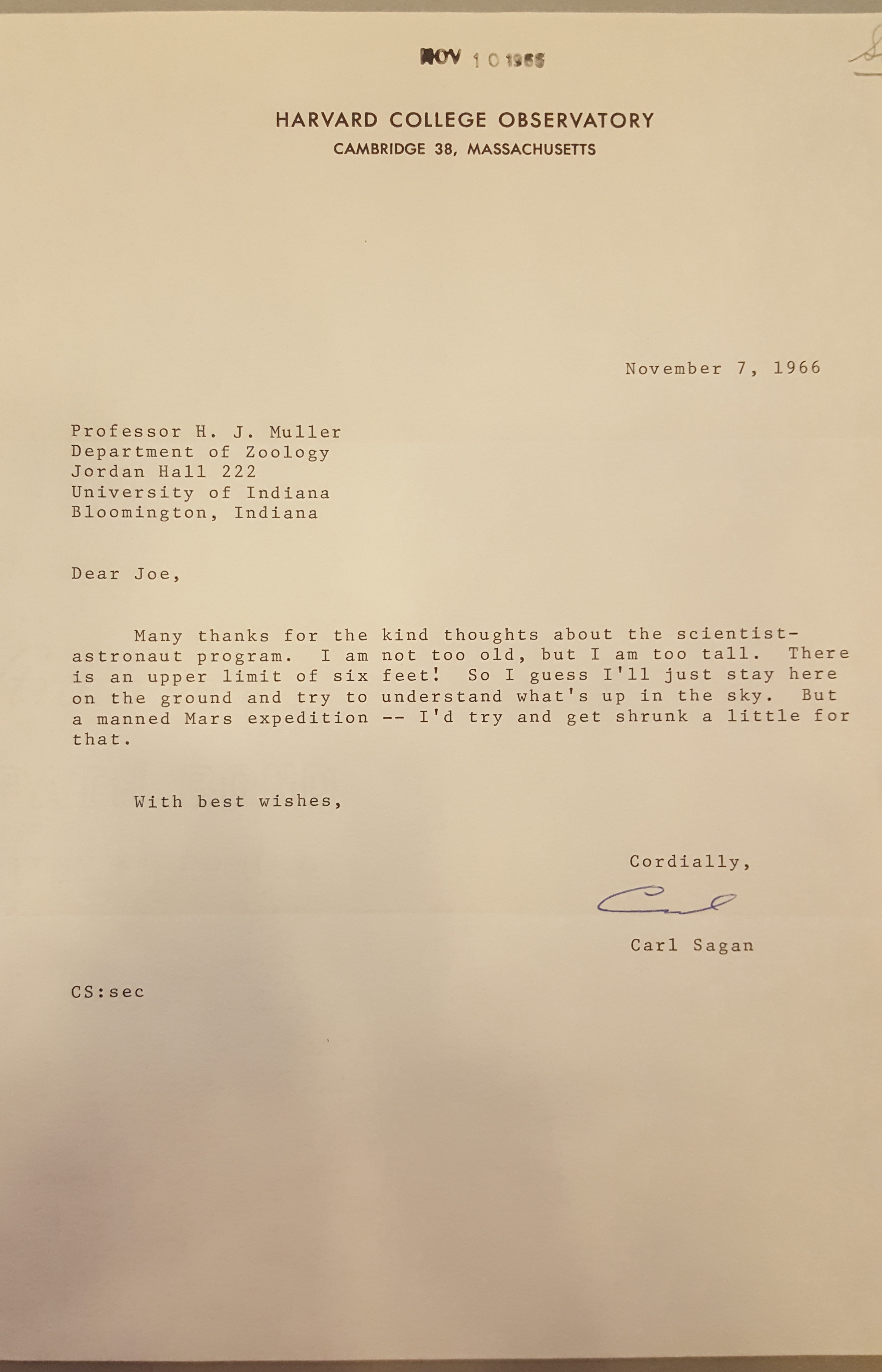Astronomer Carl Sagan probably loved space more than most people who get to go there. So why did it never occur to me that he maybe wanted to go himself? We don’t really think of astronomers as wanting to be astronauts. But once you think about it, how could they not? I was in the archives of Indiana University’s Lilly Library, looking through the papers of Herman Joseph Muller, the biologist whose Nobel Prize was for being the first to do biology by irradiating fruit flies. He was advisor to a precocious young high-school-aged Sagan, and they had a long correspondence. Flipping through it, you get to watch Sagan evolve from calling his advisor “Prof. Muller” to “Joe” over the years. You see him bashfully asking for letters of recommendation. And you get to see him explain why he was never an astronaut.
The letter
HARVARD COLLEGE OBSERVATORY
Cambridge 38, MassachusettsNovember 7, 1966
Professor H. J. Muller
Department of Zoology
Jordan Hall 222
University of Indiana
Bloomington, IndianaDear Joe,
Many thanks for the kind thoughts about the scientist-astronaut program. I am not too old, but I am too tall. There is an upper limit of six feet! So I guess I’ll just stay here on the ground and try to understand what’s up in the sky. But a manned Mars expedition — I’d try and get shrunk a little for that.
With best wishes,
Cordially,
Carl Sagan
A little note on using special collections
A library’s Special Collections can be intimidating and opaque. But they have amazing stuff once you’re started. The easiest way to get started is to show and up and just ask to be shown something cool. It’s the librarian’s job to find things, and they’ll find something. But that only shows you things people know about. How do you find things that no one even knew was in there? The strategy I’m converging on is to start by going through a library’s “finding aids”, skip to the correspondence, skip to the alphabetized correspondence, Google the people who have been pulled out, and pull the folder of the first person who looks interesting. The great thing about this strategy is that even if your Library only has the papers of boring people, those papers will include letters from that boring person’s interesting friends.



